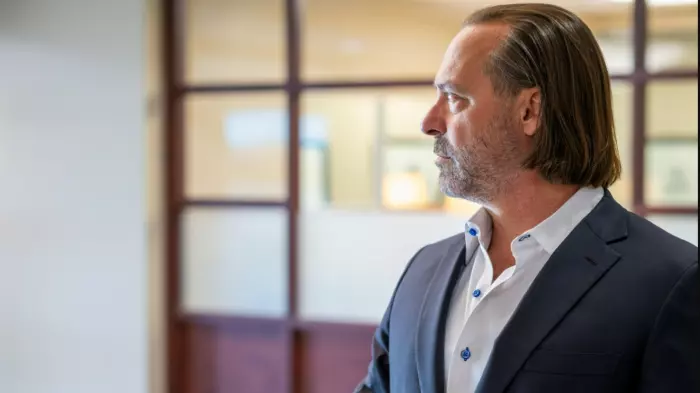Challenger brands don’t always outspend – they outthink. Here’s why bold ideas often win.
Dull advertising is costing New Zealand business leaders. Instead, they need to be bold and confident – they need to adopt a challenger mindset.
That’s the view of Duncan Shand, the CEO of advertising agency YoungShand (YS), who firmly believes it’s important for businesses to have a different point of view that makes them stand out from the proverbial crowd.
As evidence of this, Shand points to recent research highlighting that many business leaders are aware they must advertise but are unwilling to make the effort.
“It [the advertising] just becomes more wallpaper we’re all gazing at and are not being engaged in or motivated to do something with it.
“I personally think New Zealand businesses need to punch up,” Shand says.
Failure for brands to invest in a strong, clear point of view is a missed opportunity, Shand asserts. Statements need to be made, he says, and the best way to do that is by grabbing attention and making your brand memorable.
He adds that because the amount of advertising in the market isn’t reducing, finding more effective ways to stand out will become critical.
Shand’s viewpoints are backed by The Extraordinary Cost of Dull, a research whitepaper by Adam Morgan, Jon Evans, and Peter Field, which found that the duller half of advertising still sees a lot of spending, but for little return.
The researchers looked at the business impact of rational and emotional campaigns, “knowing that emotion is what builds brands”.
“These emotional responses predict the short- and long-term potential of an ad. The positive feelings, especially happiness, help drive long-term response. If an ad makes people feel good, it’s more memorable and more effective at building positive associations with a brand.
“Negative emotions, or no emotions at all, make that far less likely.”
Therefore, the research states that playing safe is a poor business strategy.
“Especially in an age of polarised opinions, brands may be tempted to make ads less interesting, risky or edgy so as not to cause perceived offence.
“But the old saying, 'you can’t please everyone’, is true of ads. On average, all ads, whatever their neutrality level, generate some negative feeling.
Shand’s colleague and the chief strategy officer at YS, Sue Kipling, says she has noticed that many businesses have reduced their spending in the current challenging economic environment, which makes a lot of sense to her when consumer spending is also decreasing.
However, she warns that in such circumstances, businesses must deploy their marketing strategy more effectively based on being very connected to their customers and the market.
“We’re seeing the markets coming back as we put the longer term impacts of Covid behind us. There is great ease in refocusing on marketing now. And for me, it’s not just about turning up, but what you’re turning up with that’s making your marketing more effective,” Kipling says.
She says that it’s not about doing it in-house or using experts; it’s the principle behind it that matters.
“Be unashamed and bold, because if you’re going to spend money, spend it right.”
According to Shand and Kipling, this leads to adopting a challenger mindset, which they explain is something that’s not new and has been around for decades. For example, if you’re number two or three in the market, “you will have to zag when everybody else is zigging”, says Kipling, “because you don’t have the same resources or budget”.
“So you naturally have to do something different to cut through and take that number one market spot.”
An example of this challenger mindset approach is when YS was hired to revitalise lingerie brand Bendon’s advertising in the New Zealand and Australian markets. Kipling says Bendon needed to challenge the market – and itself. It couldn’t just rely on discounting, retail, and performance marketing any longer.
When Bendon approached YS, the brief wasn’t just to advertise bras, it was to rebuild relevance. The insight driving the work was clear: most women wear bras every day, yet rarely feel good in them. They believed the category had become polarised — a choice between uncomfortable glamour or uninspiring basics.
YS developed 'Bra Better', describing it as a bold brand platform that celebrated everyday support through the real moments that matter: the post-divorce bra, the boardroom breakthrough, the Sunday-morning reset.
“We didn’t invent a new product; we reconnected it to real women,” says YS chief creative officer, Corey Chalmers. “It’s a bold platform with truth at its core, and stretch in every direction.”
“With Bendon products front and centre, we instilled a new energy into the brand with relatable moments driven by data-backed insights. It’s not just a campaign, it’s a catch cry.”
Ultimately, Shand says the business lesson is to have a challenger mindset and settle for nothing less than a brand presence that’s bold, deliberate, and impossible to ignore. Then, challenge yourself to keep it once you have it.
“That’s the sweet spot, and that’s why we’ve built our agency's direction around it,” he says. “Boldness might not be for the faint of heart, but that’s where success lives.”
“The only way to hit a six is to swing hard. Irresponsible? It would be irresponsible not to try.”
The message from YS couldn’t be clearer: be ambitious, be disruptive, be bold, but above all else, don’t be dull.
To learn more about YoungShand's approach to building bold brands, visit youngshand.com.





